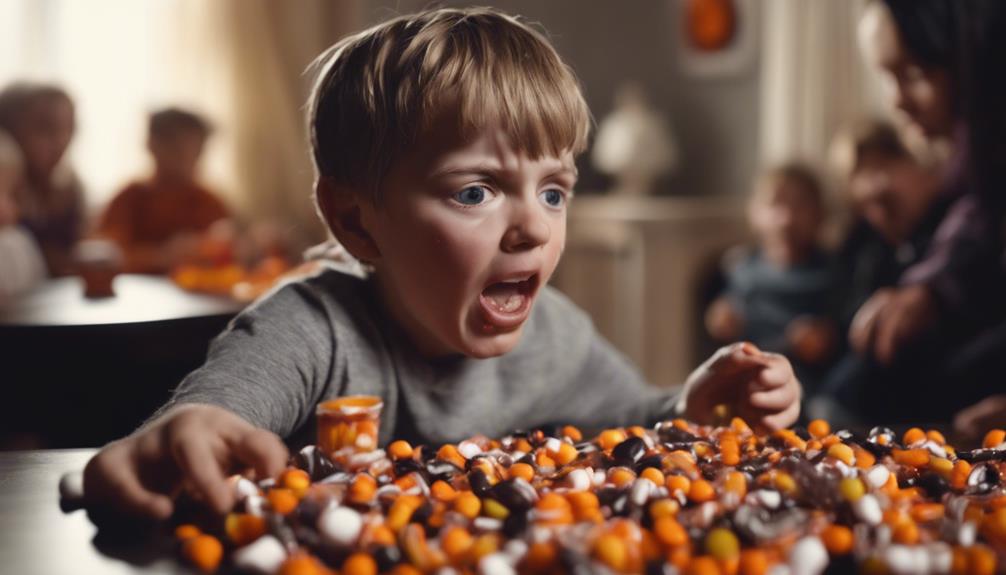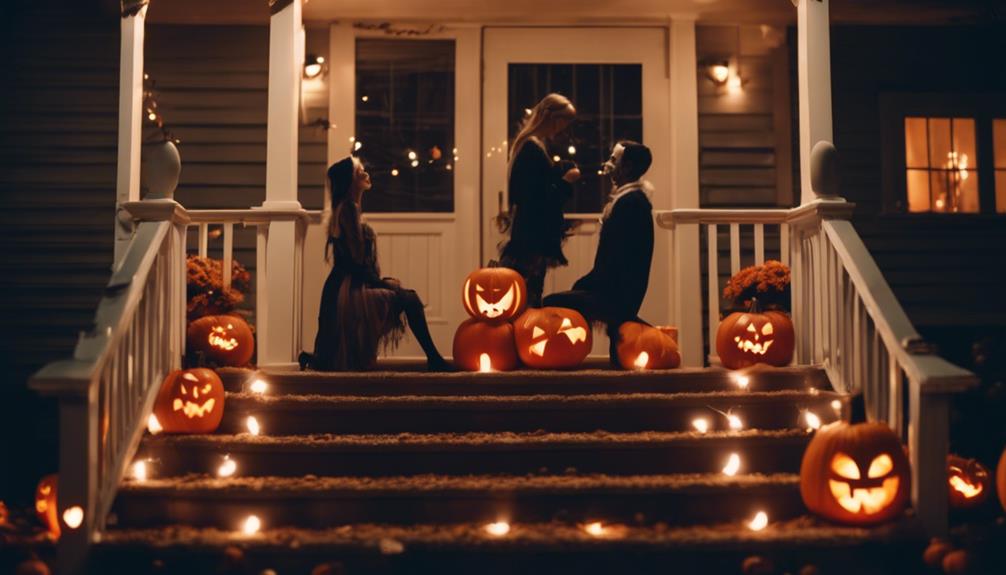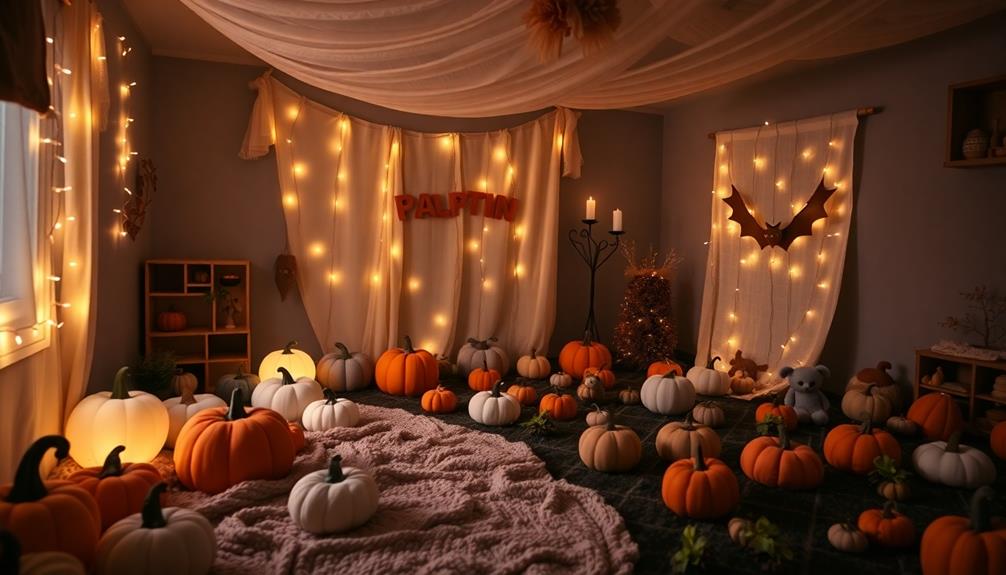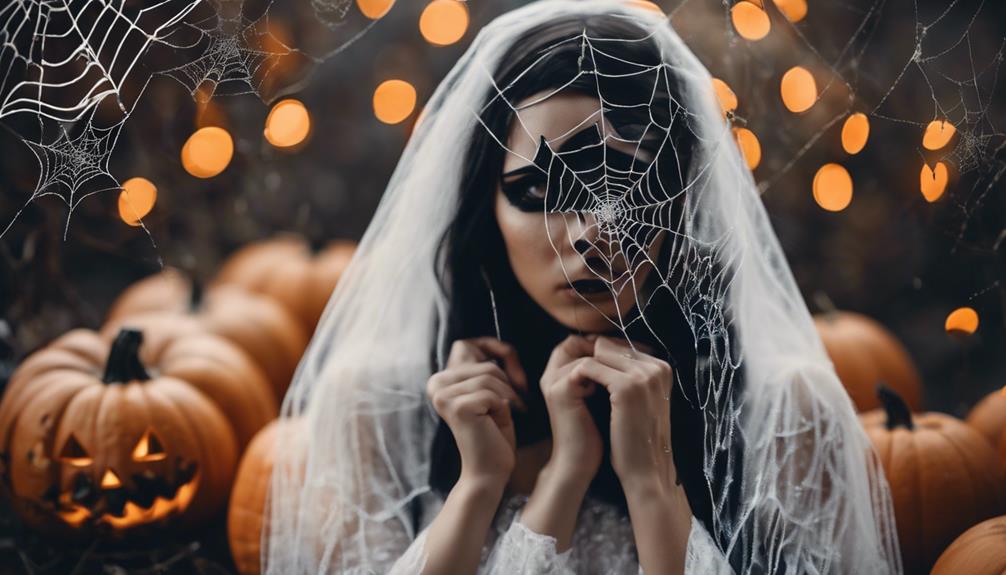There are surprising reasons Halloween should be banned, including religious conflicts, wildlife safety risks, public health concerns, workplace liabilities, safety concerns for public events, distribution of pot edibles, and food allergies impacting dress codes. These factors highlight potential dangers and complications associated with this holiday. Each contributes to the ongoing debate about the necessity of Halloween celebrations.
Key Takeaways
- Halloween poses risks for wildlife safety in urban areas.
- Concerns about spreading contagious illnesses are heightened during Halloween.
- Workplace liabilities increase with Halloween celebrations.
- Public safety concerns lead to the cancellation of Halloween events.
- Distribution of pot edibles raises safety worries during Halloween.
Religious Conflicts
Religiously motivated requests from parents prompted a New Jersey elementary school to contemplate banning Halloween festivities. The school administrators found themselves in a dilemma when faced with the religious conflicts arising from parents' opt-out requests regarding Halloween celebrations.
Initially, the school planned to cancel Halloween to respect the beliefs of those families who objected to the holiday due to religious reasons. This decision sparked a debate within the community about accommodating these religious concerns while still maintaining a sense of inclusivity for all students.
Ultimately, after careful consideration and discussions with various stakeholders, including parents and religious leaders, the school decided to reinstate the Halloween celebration. By finding a middle ground that respected the religious beliefs of some families while also allowing the majority to participate in the festivities, the school aimed to balance the diverse perspectives within the community.
This experience highlighted the importance of acknowledging and addressing religious conflicts in a respectful and inclusive manner.
Wildlife Safety Risks
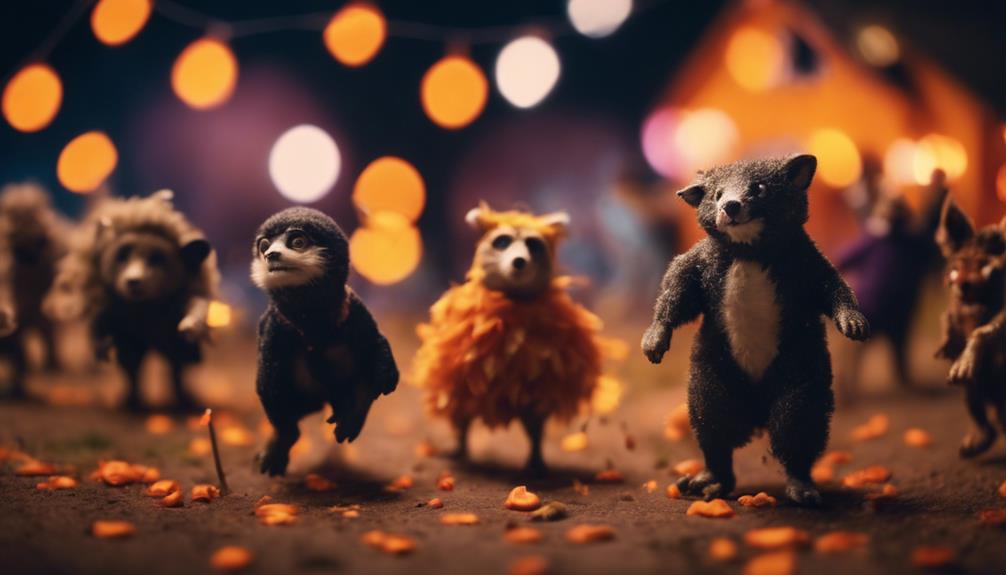
Wildlife safety risks during Halloween pose significant concerns for communities, necessitating careful planning and precautions to guarantee public safety.
Halloween celebrations can become risky when wildlife, such as polar bears in North Canada and mountain lions in Turlock City, California, venture into urban areas. Due to these potential dangers, some areas have had to cancel outdoor trick-or-treating events.
The presence of polar bears and the threat of mountain lions have forced authorities to prioritize public safety over traditional Halloween festivities. As a result, safety measures are implemented, including the restriction of outdoor activities to minimize the risk of wildlife-related incidents.
It's important for communities to assess local wildlife threats and take necessary precautions when organizing Halloween events. By being aware of these risks and planning accordingly, communities can ensure a safer environment for Halloween celebrations while protecting both people and wildlife.
Public Health Concerns
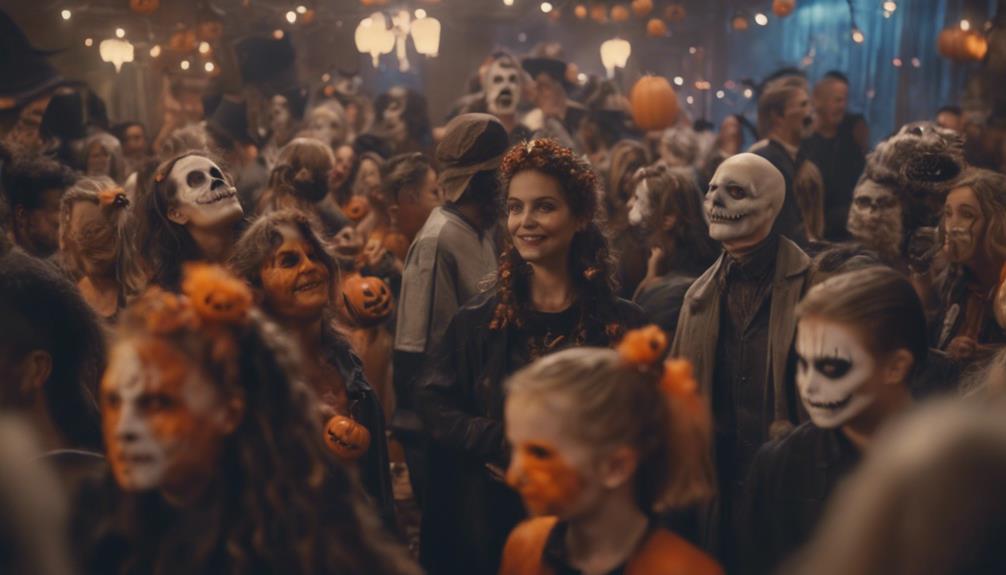
Public health concerns associated with Halloween involve the potential for spreading contagious illnesses like colds and flu through close interactions during trick-or-treating.
Safety protocols due to COVID-19 have also prompted discussions about canceling Halloween to prevent the spread of the virus in large, crowded gatherings.
Communities express worries about accidents and injuries during Halloween events, leading to calls for a ban to safeguard public health.
Spread of Illness
Halloween festivities can pose a significant risk to public health due to the potential spread of illnesses through close interactions and shared items. When engaging in activities like trick-or-treating, the close contact between individuals can facilitate the transmission of germs and viruses.
The exchange of candy and items during Halloween further enhances the risk of spreading illnesses within the community. Crowded parties and events create environments where contagious diseases can easily be transmitted from person to person. Sharing food and treats, a common tradition during Halloween, increases the chances of exposure to harmful pathogens.
In light of these concerns, some schools and communities are contemplating banning Halloween celebrations to prevent potential outbreaks and prioritize public health safety. By being mindful of these risks and taking necessary precautions, you can help mitigate the spread of illnesses during Halloween festivities. Stay informed, practice good hygiene, and consider alternative ways to celebrate while safeguarding public health.
Safety Hazards
Given the potential risks associated with Halloween festivities, it's crucial to address the safety hazards, particularly public health concerns, that may arise during these celebrations.
- Secure Costumes: Ill-fitting, flammable, or obstructive costumes can lead to trips, falls, or even serious injuries.
- Toxic Treats: Exposure to allergens, toxins, or contaminated candies can result in adverse health effects.
- Increased Emergency Room Visits: Halloween activities often spike medical incidents, contributing to overcrowded emergency rooms and straining healthcare resources.
When it comes to Halloween costumes, make sure they fit properly, have good visibility, and are flame-retardant to prevent accidents. Be cautious of treats that may contain allergens or unknown substances, and inspect them before consumption. Lastly, be mindful of your surroundings and engage in safe practices to avoid becoming another statistic in the surge of Halloween-related emergencies. Stay vigilant, prioritize safety, and enjoy the spooky season responsibly.
Manhunts for Dangerous Individuals
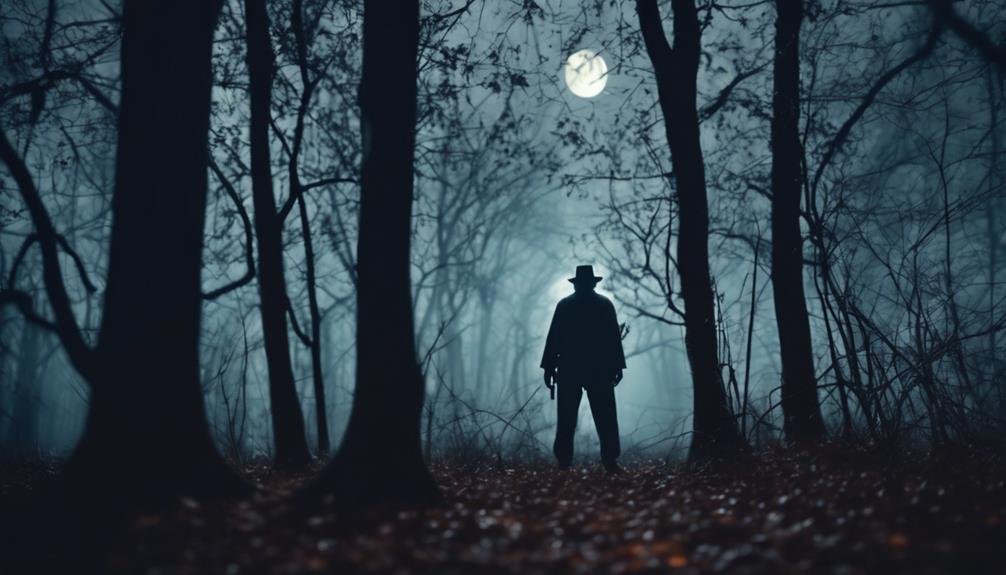
When dangerous individuals are on the loose, Halloween can become a risky time due to the heightened safety concerns. Monitoring large crowds becomes challenging, creating opportunities for potentially violent incidents to occur.
The presence of an ongoing manhunt can greatly impact the festivities and force cancellations to guarantee public safety.
Safety Risks Increase
During manhunts for dangerous individuals, safety risks markedly increase in communities like Barrett Township, Pennsylvania. Halloween becomes a time of heightened concern when individuals like Eric Frein, an accused killer, are on the loose. Here are some reasons why safety risks escalate during such manhunts:
- Law enforcement resources are diverted towards the search for the dangerous individual, leaving fewer officers available for general public safety concerns.
- Residents may feel uneasy venturing out for traditional Halloween activities like trick-or-treating when a dangerous person is at large in their community.
- The uncertainty and fear generated by the manhunt can lead to increased anxiety among community members, impacting their willingness to participate in Halloween events.
In such situations, it's essential for authorities to prioritize the safety of residents over holiday celebrations. By canceling Halloween activities during manhunts for dangerous individuals, communities aim to minimize the risks and keep their residents safe.
Difficulty Monitoring Large Crowds
Monitoring large crowds during manhunts for dangerous individuals poses significant challenges for law enforcement agencies. In Barrett Township, Pennsylvania, the search for Eric Frein, an accused police killer, led to the cancellation of Halloween activities. This disruption highlights the difficulty in ensuring public safety during such investigations. The situation in Barrett Township serves as a reminder of the complexities involved in monitoring large gatherings, especially in areas where individuals like Frein are at large.
Similarly, in New Jersey, managing Halloween events during manhunts for dangerous individuals can be a demanding task. The need to track and capture suspects while safeguarding public spaces requires meticulous planning and coordination. Law enforcement agencies must balance crowd control measures with the urgency of apprehending these individuals to prevent any potential harm to the community. As seen in Barrett Township, the safety of the public takes precedence over traditional celebrations when such threats are present.
Potential for Violence
Managing the potential for violence during manhunts for dangerous individuals requires a delicate balance between public safety and community festivities. When Halloween festivities coincide with a manhunt for a dangerous individual, the situation becomes especially challenging. Here are some key points to bear in mind:
- The safety of the public is paramount, leading authorities to cancel Halloween celebrations in affected areas to focus on apprehending the individual.
- The presence of a dangerous individual can disrupt traditional Halloween activities like trick-or-treating, causing concerns about community safety.
- Manhunts for accused killers create fear and uncertainty, prompting officials to prioritize caution and community security over Halloween events.
In such circumstances, it's important for communities to stay informed about the situation and follow any safety instructions provided by local authorities. By being vigilant and cooperative, individuals can contribute to ensuring the well-being of everyone during these tense times.
Workplace Liabilities
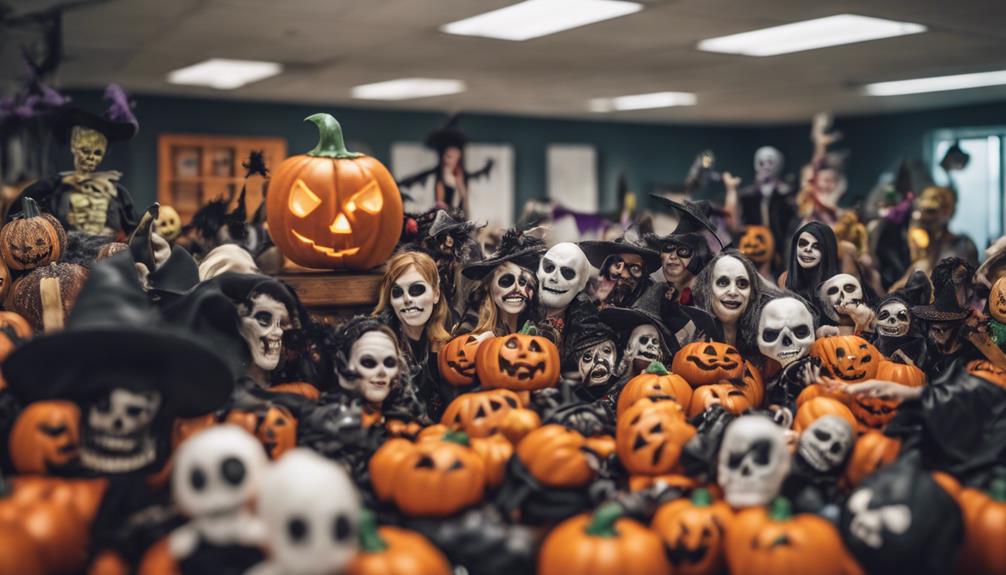
To protect your workplace from potential liabilities, consider the impact of Halloween celebrations on employee safety and company reputation. Some employers restrict Halloween activities at work due to concerns about liabilities arising from costume-related accidents or inappropriate behavior. These restrictions are often in place to maintain a professional environment and prevent incidents that could lead to legal issues.
Liability worries such as injuries, harassment claims, or damage to company property are common reasons for workplaces to limit or even ban Halloween celebrations among employees. Employers may establish strict guidelines or outright prohibitions on Halloween festivities to avoid costly legal disputes and prevent negative impacts on the company's reputation.
Distribution of Pot Edibles

Parents in Colorado are increasingly concerned about the potential risks associated with the distribution of pot edibles during Halloween. Here are some key points to bear in mind:
- Denver police have expressed worries about children receiving pot edibles while trick-or-treating.
- Parents in Colorado are facing new fears about pot edibles impacting Halloween celebrations.
- Warnings from Denver police have influenced parents' decisions about participating in trick-or-treating.
The distribution of pot edibles poses a significant concern during Halloween, especially in states where marijuana is legal. With the possibility of children accidentally ingesting these edibles, parents are rightfully cautious. Denver police warnings haven't only raised awareness but also prompted some families to reconsider participating in traditional Halloween activities.
As you prepare for the upcoming festivities, it's crucial to stay informed about the potential risks associated with pot edibles and take necessary precautions to ensure a safe and enjoyable Halloween for everyone involved.
Food Allergies and Dress Code
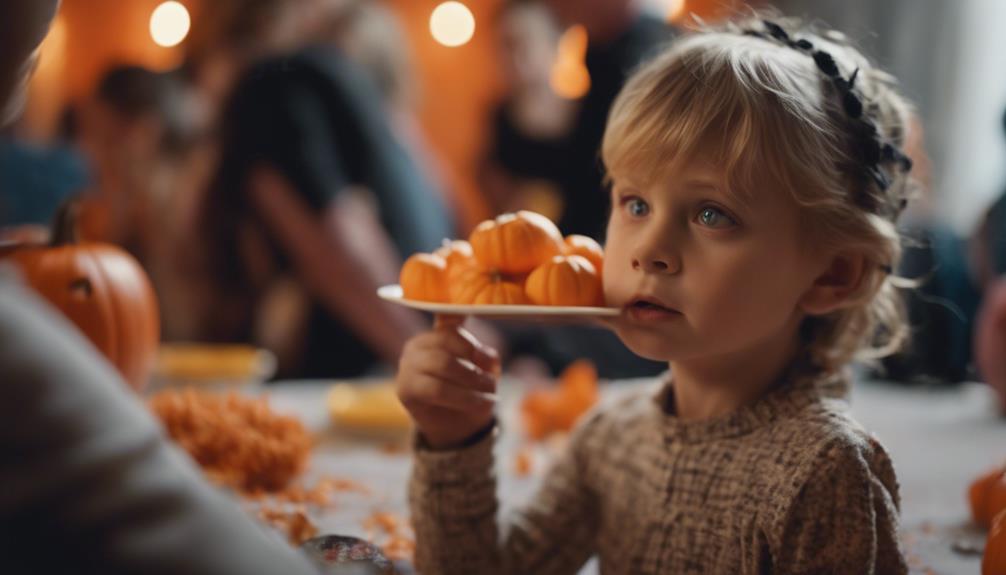
Considering the prevalence of food allergies among children, Halloween dress codes play an important role in ensuring a safe and enjoyable experience for all participants.
Food allergies can turn Halloween into a frightening experience for both kids and parents. Some families opt out of trick-or-treating altogether to steer clear of potential allergy flare-ups linked to treats. The risk of food allergies alters traditional Halloween activities, leading parents of allergic children to skip the festivities. These concerns are so significant that they sometimes prompt the cancellation of trick-or-treating events.
When selecting costumes, it's wise to take into account the materials and fabrics used, as certain materials could trigger allergic reactions for some children. By following dress code guidelines that prioritize allergy-friendly materials and being mindful of potential allergens in treats, everyone can partake in the Halloween fun without worry.
Frequently Asked Questions
Why Should Trick-Or-Treating Be Banned?
If you're considering why trick-or-treating should be banned, several factors come into play. Safety risks like traffic accidents and tampered candy incidents raise concerns.
Additionally, the environmental impact of excess waste from Halloween activities and the exclusion of children with food allergies are key reasons. Critics also argue against the consumerism associated with Halloween.
These combined issues contribute to the ongoing debate about whether trick-or-treating should continue.
Why Do Schools Not Allow Halloween?
Schools don't allow Halloween for various reasons. It can be stressful for families and teachers in a busy month. The additional costs of costumes and decorations also burden families.
Some schools prefer inclusive autumn-themed celebrations. Teachers aim to expose children to diverse celebrations. While some staff support banning Halloween due to its origins, most view it as an educational and fun opportunity.
What Shouldn't You Do on Halloween?
On Halloween, you shouldn't wear costumes that perpetuate stereotypes or offend others. Avoid choosing outfits that mock religious beliefs or are culturally insensitive.
Opt for inclusive and respectful costume choices to create a positive atmosphere. Keep in mind the impact of your costume on society and prioritize thoughtful options.
Embrace the opportunity to promote a more culturally sensitive Halloween celebration by being mindful of your costume selection. Stay respectful and considerate in your Halloween attire choices.
Why Was Halloween Almost Banned in the 1920s?
In the 1920s, Halloween faced potential bans due to its pagan roots and associations that clashed with certain religious beliefs. Concerns about occult activities, pranks, and superstitions led to calls for prohibition to uphold community values.
Many viewed Halloween as a night promoting mischief and vandalism, sparking debates about its continuation. The push to ban Halloween in the 1920s stemmed from moral objections and the desire to eliminate practices deemed contrary to prevailing societal norms.
Conclusion
To sum up, it's imperative to take into account a multitude of reasons why Halloween should be banned. These reasons include religious conflicts, wildlife safety risks, public health concerns, manhunts for dangerous individuals, workplace liabilities, distribution of pot edibles, and food allergies. It's crucial to prioritize safety above all else. Remember, 'better safe than sorry' when it comes to making decisions that impact the well-being of our communities.
- –
